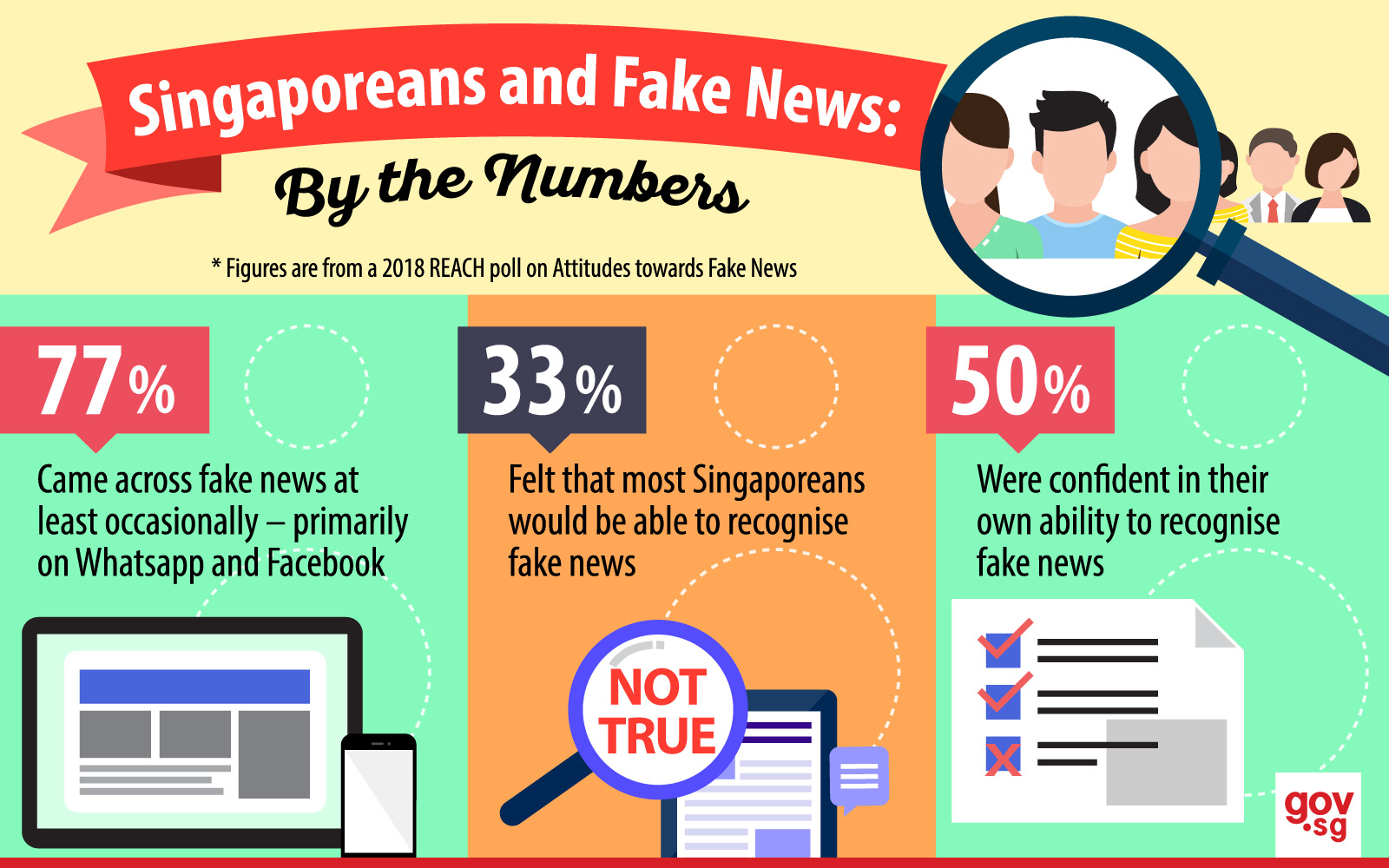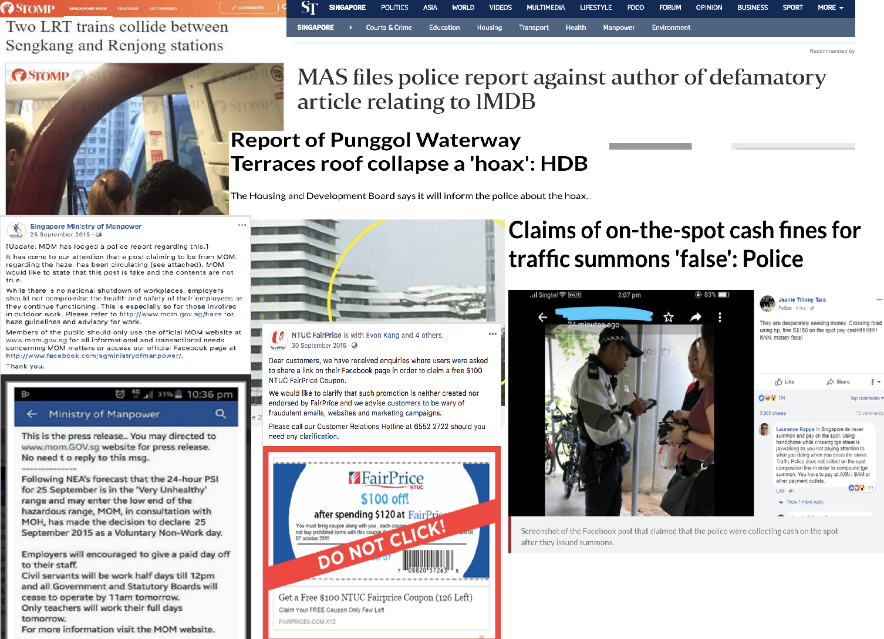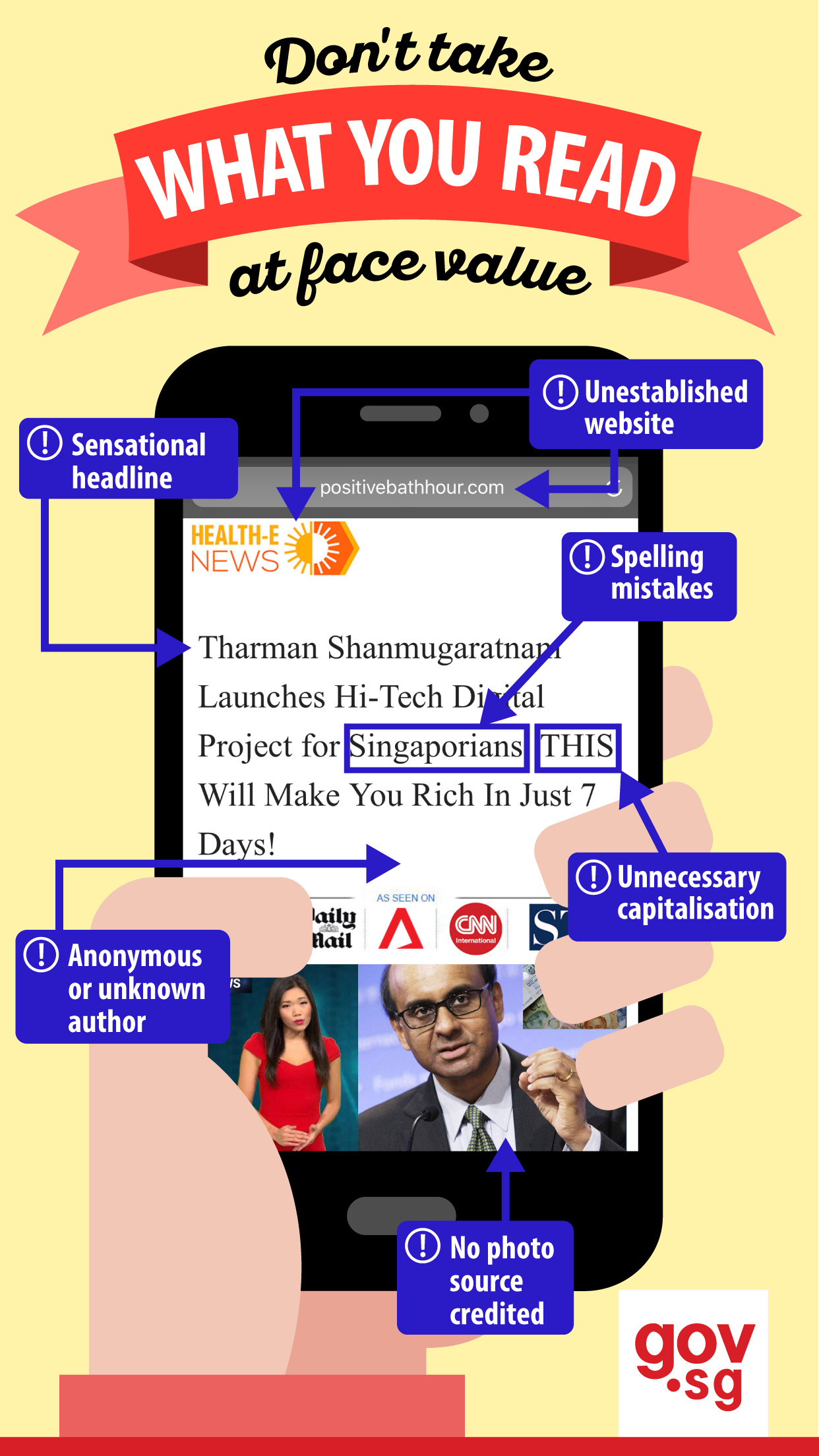

Singapore has been ramping up its efforts to stem the spread of Fake News.
In September, the Select Committee on Deliberate Online Falsehoods made 22 recommendations to tackle the problem.
The recommendations include enacting legislation, which will allow the Government to swiftly disrupt the spread of online falsehoods.
What is fake news
Fake news is essentially any news or story that is created to deliberately misinform or deceive readers and viewers.
With content being easily spread via social media platforms, and with access to easy-to-use editing tools, fake news has become increasingly pervasive.

Singapore hasn’t been spared from fake news. Here are some examples in recent years.

Fake news can cause public health scares, sow discord within various groups in society, and cause time and resources to be wasted.
Can you identify fake news?
Fake news is often difficult to spot. They are often made to look like legitimate news sites, and they often include real news elements.
Some sites use bots (software that perform automated tasks over the internet) to spread fake news quickly, fooling social media platforms and users into thinking that a piece of content has gone viral.
But there are ways to discern the real from the fake. Here are some giveaway signs of fake news.
Unreliable source If the website isn’t one that you’ve heard before, or has a reputation of being unreliable, think twice to make sure you aren’t being deceived.
Reputable sites aren’t carrying the story Go to your mainstream media outlets to check if they’re carrying it. If they aren’t, it’s likely not true.
The story’s too good to be true Sensational headlines, accompanied by an equally sensational pictures, make for fantastic clickbait. These are the types of stories fake news sites thrive upon.
It triggers strong emotions Feeling angry or upset after reading an article? Emotional headlines and content are often ways to distract you from checking the facts.

Just be S.U.R.E
Before you share a piece of news, think about whether what you’re sharing is credible, using the S.U.R.E framework.
SOURCE
Where did the content originate from? How credible is the publisher?
UNDERSTAND
Search for clarity in what you’re reading. Does the article make sense? Does it trigger strong emotions? Do offers sound too good to be true?
RESEARCH
Go beyond the initial source. Has it been published elsewhere before? Check the publish date. When was the photo taken? Real information can often be taken out of context.
EVALUATE
Look at the story from various angles. Was it meant to be a joke? Check your own biases and emotions. Are they affecting your judgement? Think before you share!
More details at www.nlb.gov.sg/sure/
RELATED ARTICLES
We use cookies to tailor your browsing experience. By continuing to use Gov.sg, you accept our use of cookies. To decline cookies at any time, you may adjust your browser settings. Find out more about your cookie preferences here .

















